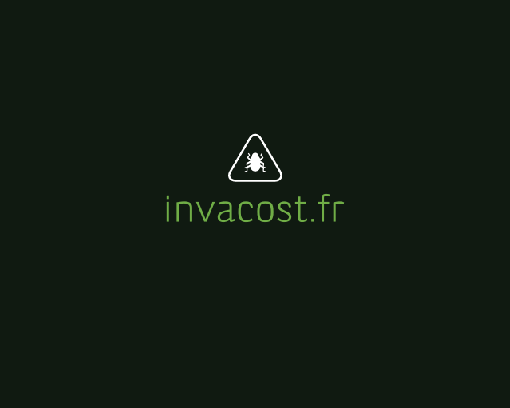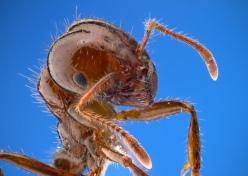
Portrait of a red imported fire ant Solenopsis invicta. This species arrived to the southeastern USA from South America in the 1930s. Specimen from Brackenridge Field Laboratory, Austin, Texas, USA. Public domain image by Alex Wild, produced by the University of Texas “Insects Unlocked” program.
As many of you already know, I spent a good deal of time in France last year basking in the hospitality of Franck Courchamp and his vibrant Systematic Ecology & Evolution lab at Université Paris-Sud. Of course, I had a wonderful time and was sad to leave in the end, but now I have some hard evidence that I wasn’t just eating cheese and visiting castles. I was actually doing some pretty cool science too.
Financed by BNP-Paribas and Agence Nationale de Recherche, the project InvaCost was designed to look at the global impact of invasive insects, including projections of range dynamics under climate change and shifting trade patterns. The first of hopefully many papers is now out.
Just published in Nature Communications, I am proud that many months of hard work by a brilliant team of ecologists, epidemiologists and economists has culminated in this article entitled Massive yet grossly underestimated costs of invasive insects, which in my opinion is the first robust analysis of its kind. Despite some previous attempts at estimating the global costs of invasive species1-4 (which have been largely exposed as guesswork and fantasy5-10), our paper rigorously treats the economic cost estimates and categorises them into ‘reproducible’ and ‘irreproducible’ categories.
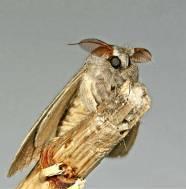
Gypsy moth (Lymantria dispar) adult. Dimitri Geystor (France)
What we found was sobering. If we look at just ‘goods and services’ affected by invasive insects, the annual global costs run at about US$70 billion. These include agricultural, forestry and infrastructure damages, as well as many of the direct costs of clean-up and eradication, and the indirect costs of prevention. When you examine that number a little more closely and only include the ‘reproducible’ studies, the total annual costs dip to about US$25 billion, meaning that almost 65% of the costs recorded are without any real empirical support. Scary, especially considering how much credence people put on previously published global ‘estimates’ (for example, see some citation statistics here).
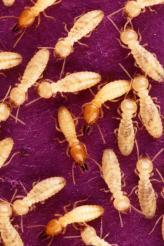
Formosan subterranean termite Coptotermes formosanus by Scott Bauer, US Department of Agriculture, Agricultural Research Service
There’s a great example to illustrate this. If you take it at face value, the most expensive invasive insect in the world is the Formosan subterranean termite Coptotermes formosanus estimated at US$30.2 billion/yr globally. However, that irreproducible estimate is based on a single non-sourced value of US$2.2 billion per year for the USA, a personal communication supporting a ratio of 1:4 of control:repair costs in a single US city (New Orleans), and an unvalidated assumption that the US costs represent 50% of the global total.
For the human health costs associated with invasive insects — mainly in the form of infectious diseases like dengue, West Nile virus and chikungunya (but excluding malaria because most malaria outbreaks are not associated with ‘invasive’ insects) — the story is a little more straightforward. About US$7 billion is spent every year on treatment, eradication and prevention of invasive insect-associated medical conditions, of which the majority (~ 85%) is derived from reproducible estimates.
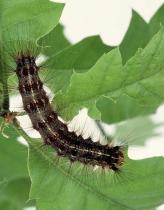
Gypsy moth (Lymantria dispar) larva. Scott Bauer, USDA Agricultural Research Service. Bugwood.org
Irrespective of the credibility of the real sums, what’s particularly amazing is just how closely the totals mirror research effort — as the number of regional (e.g., Asia, North America, Europe, etc.) estimates increases, so to do the total costs. In fact, if you look at the global costs to goods and services arising from invasive insects and project what a ‘minimum’ cost would be if sampling effort was equal all over the world (it isn’t — most estimates in this category are from North America and Europe), the costs increase by up to 5 times. For human health, the scaling factor would be more like 4 times, meaning that if we ignore reproducibility and try to correct for minimal sampling bias, the total annual global costs of invasive insects to human society are nearly US$270 billion.
To put this number into perspective, US$270 billion is ~ 2.6% of the United Kingdom’s annual GDP. And this is still just the tip of the largely unseen and unmeasured iceberg, mainly because we have yet to measure and estimate the costs of invasive insects in so many regions of the world.
Who pays for these exorbitant costs? One might argue that at least in the case of commercial goods and services, they are merely absorbed into the cost of doing business. But the available evidence suggests otherwise. In fact, most costs appear to be borne ultimately by individuals (i.e., you and me) via out-of-pocket expenses, higher consumer prices and taxes to fund management, thus reinforcing the poverty-illness nexus.

Brown spruce longhorn beetle (Tetropium fuscum) from Sweden by Martin Andersson
So what can be done? As the climate warms and trade flows increase, there’s a strong likelihood that such costs will increase. Thus, if we can invest in reducing the spread and extent of damage before most of it occurs, we stand to waste a lot less money — sometimes in the order of about 10 times less. Planning, vigilance, quick action and adequate funding for biosecurity means that society will be better off in the long run.
1Pimentel et al. 2000. Environmental and economic costs of nonindigenous species in the United States. BioScience 50: 53-65. doi:10.1641/0006-3568(2000)050[0053:eaecon]2.3.co;2; 2Pimentel et al. 2005. Update on the environmental and economic costs associated with alien-invasive species in the United States. Ecol Econ 52: 273-288, doi:10.1016/j.ecolecon.2004.10.002; 3Pimentel et al. 2001. Economic and environmental threats of alien plant, animal, and microbe invasions. Agric Ecosyst Environ 84: 1-20. doi:10.1016/S0167-8809(00)00178-X; 4Pimentel, ed. 2011. Biological Invasions: Economic and Environmental Costs of Alien Plant, Animal, and Microbe Species. 2nd ed. Boca Raton, Florida, USA: CRC Press; 5Goldstein. 2011. 17 Reasons the Economic Impact of the Domestic Cat as a Non-Native Species in the U.S. Does Not Cost $17 Billion www.straypetadvocacy.org/PDF/17reasons.pdf; 6Hoagland & Jin. 2006. Science and economics in the management of an invasive species. BioScience 56: 931-935. doi:10.1641/0006-3568(2006)56[931:saeitm]2.0.co;2; 7Yemshanov et al. 2009. Towards an integrated approach to modelling the risks and impacts of invasive forest species. Environ Rev 17: 163-178. doi:10.1139/A09-007; 8McDermott et al. 2013. The welfare impacts of an invasive species: endogenous vs. exogenous price models. Ecol Econ 85: 43-49, doi:10.1016/j.ecolecon.2012.08.020; 9Sagoff. 2008. Environmental harm: political not biological. J Agric Environ Ethics 22: 81-88. doi:10.1007/s10806-008-9127-4; 10Holmes et al. 2009. Economic impacts of invasive species in forests. Ann N Y Acad Sci 1162: 18-38. doi:10.1111/j.1749-6632.2009.04446.x
